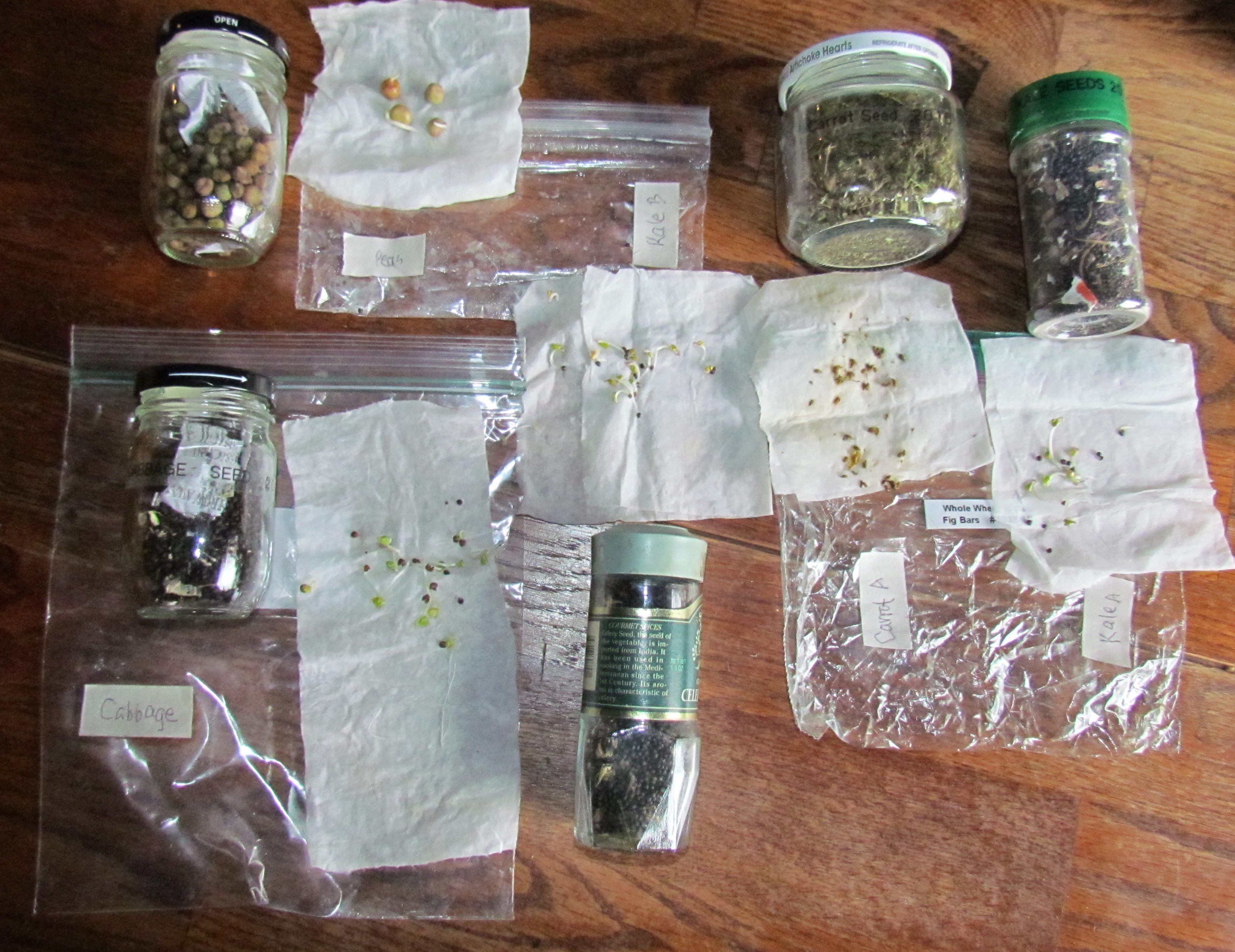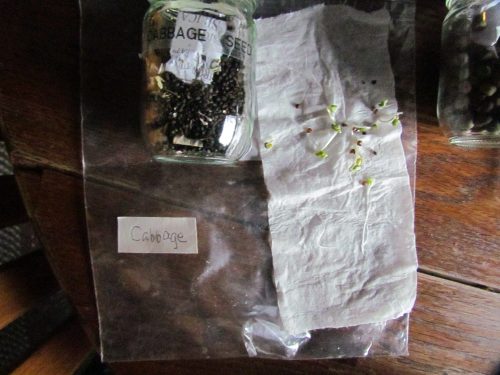Five days ago I made “seed burritos.” I wasn’t actually that hungry, I was checking to see how the seeds I saved from my garden would germinate.
The process was simple. I wet a section of paper towel, placed 10 seeds on it, wrapped it up like a burrito and placed it in a plastic bag. I labeled the bag with the seed type (note to self, add the date next time!). I didn’t seal the bag all the way, and placed it in a warm place. Then I waited. I checked them every couple days or so. Some seed varieties take longer than others, so I knew to be patient.

Home saved seeds from 2016 garden. (Photo: Michelle L Zeiger.)
After several days some but not all the seeds had sprouted. Using ten seeds makes the math easy. Nine out of ten seeds sprouted makes 90%.
Why should I do this? Well, it is one way to tell if the seeds are good enough to use. If there was less than 50% germination rate I can use a whole lot more seeds when I plant, or toss the seeds and buy fresher ones.

Cabbage Seeds tested for germination rate. (photo: Michelle L Zeiger)
My results were great, I thought. These were seeds I had saved from plants grown in my garden in 2015 and overwintered to 2016 when they produced flowers and seeds. It was exciting to get seeds, but I didn’t know for sure if they were viable until now.
The carrots haven’t sprouted yet, but I don’t expect them to for another few days. I had 50% on my chard seeds and 90% to 100% on all the others.
Having my own seeds means they should be very well suited to our local mini-climate.
